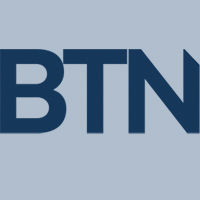Marriott International CEO Tony Capuano emphasized “stronger
than anticipated” group business in the second quarter as a lynchpin for the
brand’s continued recovery, while corporate travel room nights recovered to
just 9 percent below 2019 levels in June, compared to 20 percent below in the
first quarter.
Overall, the hotel giant posted major gains on key industry
performance metrics, but also in key regions and across location types—showing
strength in the second quarter across a number of vectors that clearly lagged
in the hotel industry’s earliest recovery phase.
Systemwide occupancy climbed to 68 percent, compared with 51
percent Q2 last year. Average daily rate beat 2019 by 7 percent worldwide,
while revenue per available room exceeded 2021 by 70.6 percent but fell 2.9
percent shy of the same metric in Q2 2019.
Under those topline numbers were gains in areas that have
been stubborn since the pandemic set the industry back in 2020. Urban core
properties came back into the demand picture in a big way in Q2, with cities
like New York and others exhibiting strength Marriott hasn’t seen in at least
eight quarters. Until now, suburban and exurban properties had dominated the
recovery map, but Capuano attributed the latest demand surge for urban
properties to corporate travel.
“We’re seeing more and more return to the office, which is
driving business demand,” he said. “And when we look at some of the big major
markets that I think are decent indicators for us, you look at New York, for
instance, that had an 86 percent occupancy in the quarter. You look at San
Francisco, 78 percent; Washington, D.C., 76 percent; Los Angeles, 80 percent.
You are seeing steady volumes of demand recovering in many of those markets
that were trailing the leisure destinations.”
Demand in Europe, which was slow to rebound because of
lingering border restrictions in the region, surged in Q2, according to
Marriott CFO Leeny Oberg.
“With borders opened in Europe, the room nights from
international guests more than doubled in the region from the first quarter to
the second,” Oberg said. “With this strong return of international travel,
Europe has experienced the swiftest RevPAR recovery of all of our regions this
year.” RevPAR in Europe topped 2019 levels in June and gained 57 percentage
points from January.
Marriott Telegraphs Ongoing Strength in Group, Corporate
Demand
According to Marriott executives, group demand accelerated
most among all segments in the second quarter. Oberg noted June in-the-year,
for-the-year new bookings were up 50 percent compared with those bookings in
2019, underscoring the trend for short booking windows as the industry heads
into the back half of the year. At the end of the second quarter, group RevPAR
paced just a few percentage points down from 2019.
“We expect additional short-term bookings will further
bolster group revenues,” she said, particularly in the U.S. and Canada, which
could see total group revenue recovery against 2019 numbers for the second half
of the year.
For business transient, we rolled over special corporate rates since the beginning of the pandemic. We’re just now starting the negotiation process for 2023. … It’s early, but we can certainly imagine those rates being up high single digits year-over-year in 2023.”
Marriott International’s Tony Capuano
Oberg noted Marriott’s corporate sales team “remains focused
on driving group average rate, which has been steadily rising for new
bookings.” In June, group rates were up 16 percent compared with June 2019. Business
transient rates were up as well, and Capuano telegraphed to corporate buyers
that the rate situation wouldn’t abate going into 2023 and that clients need to
be ready for traditional negotiations.
“For business transient, we rolled over special corporate
rates since the beginning of the pandemic,” he said. “We’re just now starting
the negotiation process for 2023. … It’s early, but we can certainly imagine
those rates being up high single digits year-over-year in 2023,” he said.
And meeting buyers can expect tight cancellation and
attrition policies to return as well. Capuano cited a recent meeting with corporate
and association clients in which buyers “gave us high marks for our flexibility
on issues like attrition during the pandemic. And I think they are hopeful we
would continue to show that level of flexibility into perpetuity, which, as demand
improves, we are tightening up a bit,” he said. “They understand that
intellectually. They are just wishing for the good old days where they had
maximum flexibility.”
Asked whether the demand picture would last into the fall,
Capuano didn’t hesitate to project strong trends throughout Q3, particularly
for group business, noting ADR up 16 percent in June over 2019 with the
expectation that level would hold or improve “through the back half of this
year and most certainly into ’23.” But Capuano also indicated there remained
upside for business travel recovery in the fall and into 2023 as larger
companies continue to put their travelers back on the road.
“When we think about business transient demand, the small
and medium-sized businesses, they are back. They are back above 2019 levels of
volume,” he said. “The bigger corporate customers, they are not quite back yet.
But even there, we continue to see steady improvement,” Capuano added, but
hedged: “Albeit not necessarily as rapid as we might like.”
Image and article originally from www.businesstravelnews.com. Read the original article here.

